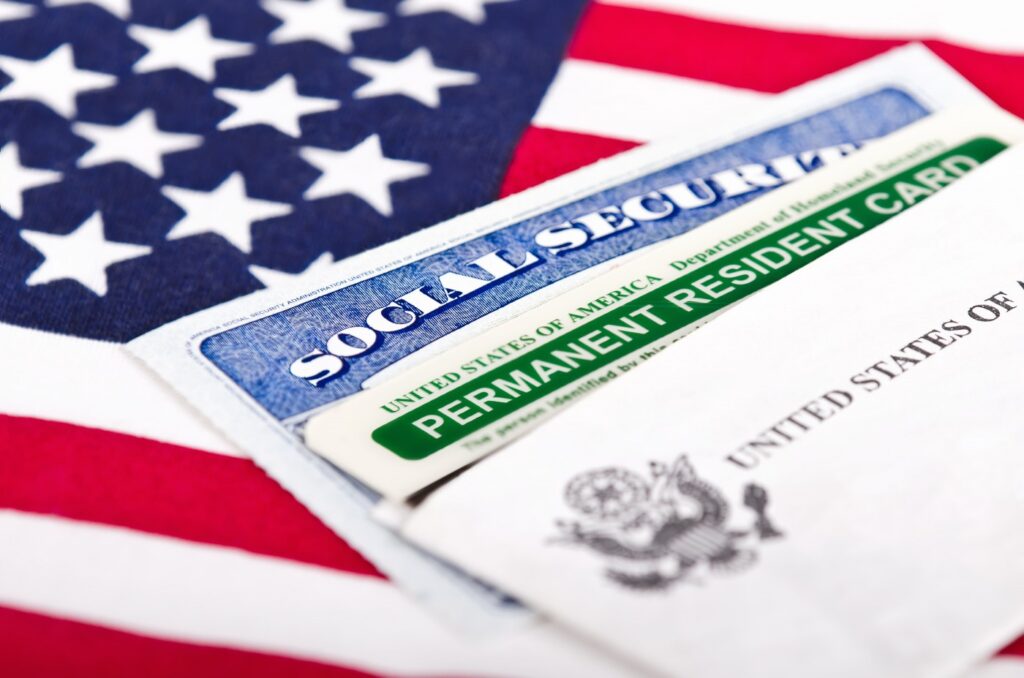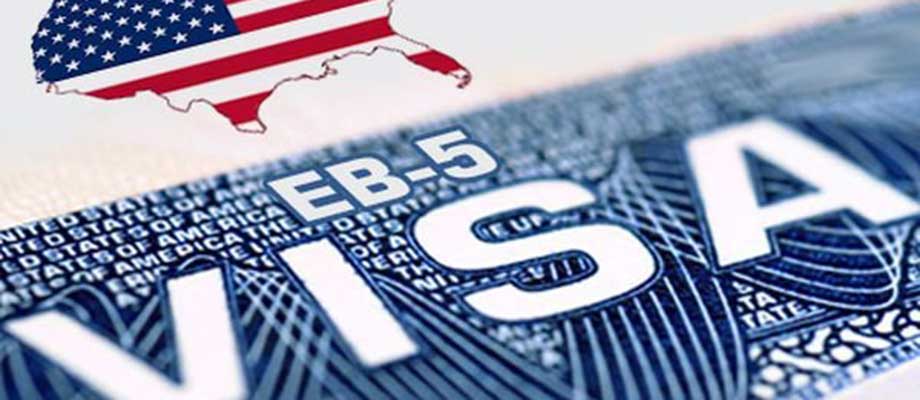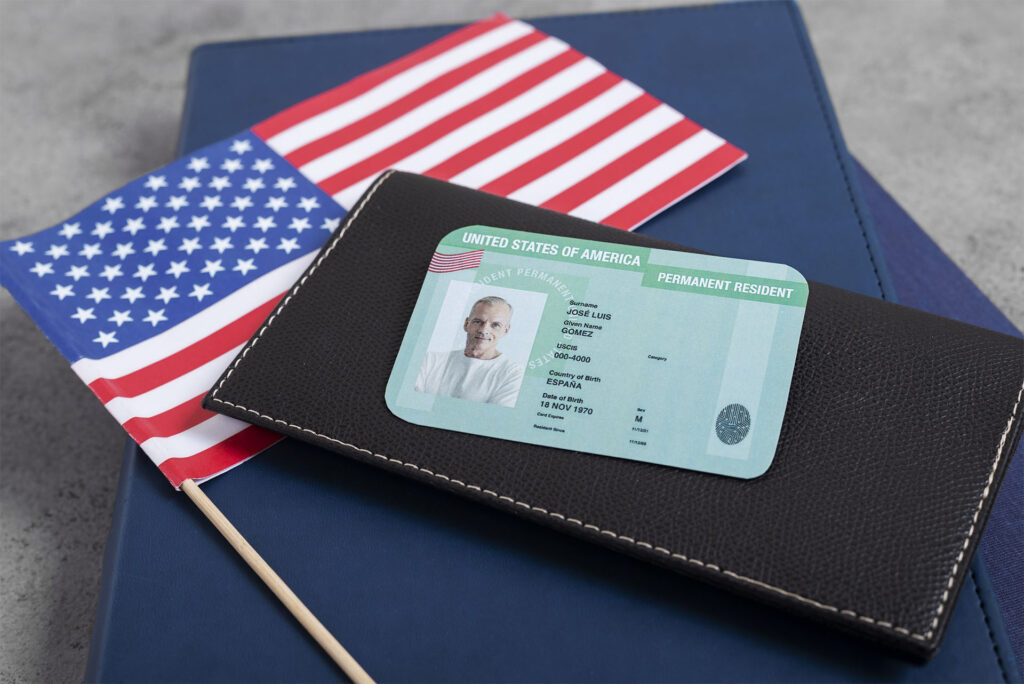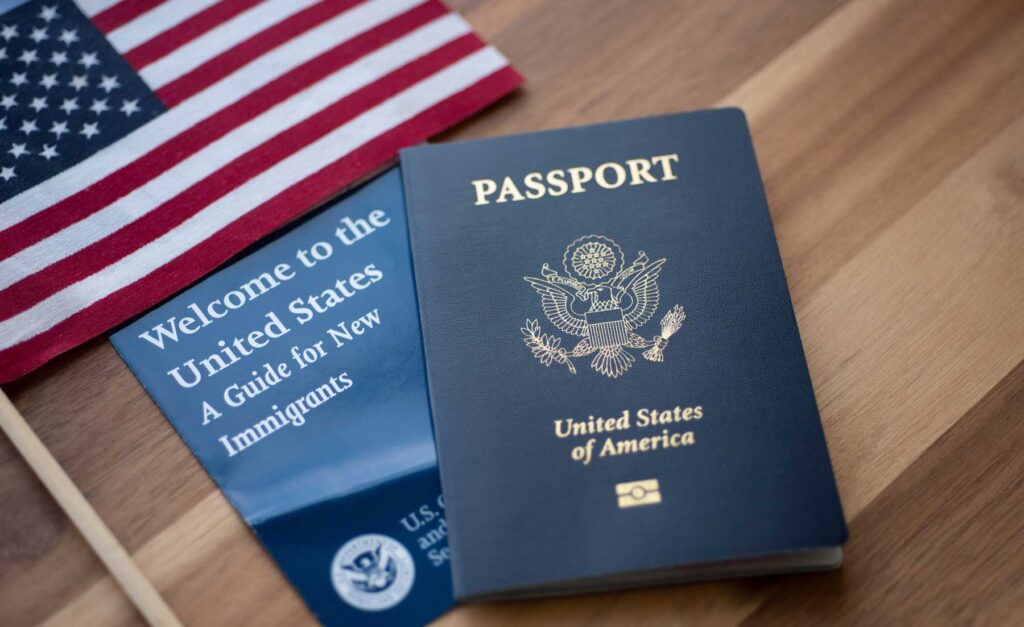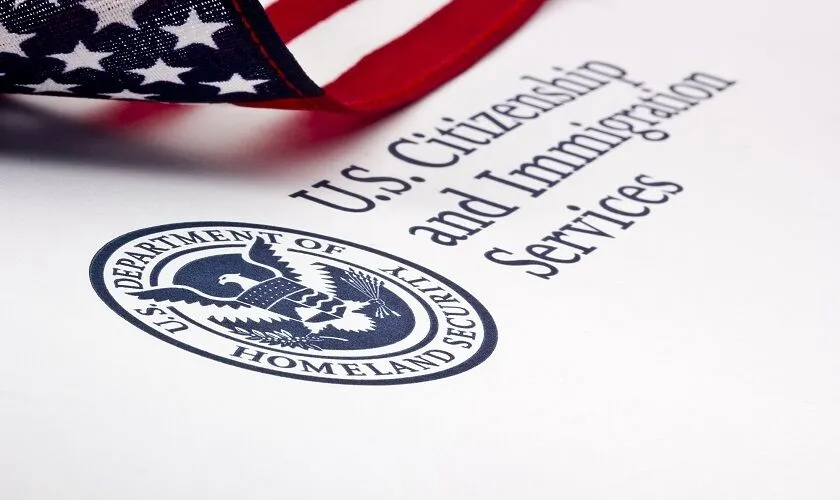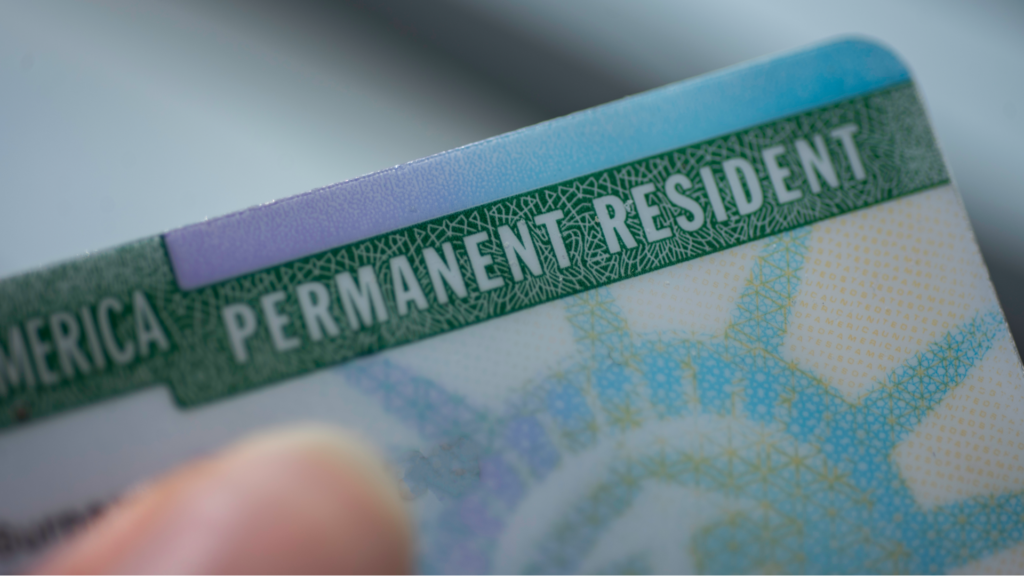Embarking on the journey to secure an Employment-Based Green Card in the United States can often feel like navigating through a labyrinth of legal procedures and intricate paperwork. For professionals like Engineer Eduardo, who aspire to advance their careers and provide a stable future for their families, understanding the Employment-Based Green Card Process is crucial. This definitive guide aims to illuminate the path, offering a beacon of expertise from the seasoned attorneys at Cortes Immigration Law Firm.
Recognizing the unique challenges faced by professionals in specialized industries, this guide delves into the nuances of the green card process, tailored to meet the specific needs of senior automation engineers and other high-skilled workers. With a focus on eligibility criteria, required documentation, and strategic navigation through the U.S. immigration system, we provide not just information, but a roadmap to achieving your American dream.
As part of our commitment to serving the needs of our clients, Cortes Immigration Law Firm aligns its mission with your aspirations. We don’t just guide you through the process; we partner with you at every step, ensuring that your journey towards securing an Employment-Based Green Card is as smooth and successful as possible.
In the following sections, we will explore the intricate details of the Employment-Based Green Card Process, including insights into the EB2, EB3, and EB5 visa categories. We will also provide expert guidance on how to present your qualifications effectively and how to address potential challenges along the way. Stay with us as we embark on this comprehensive journey, designed to bring clarity and confidence to your immigration endeavors.
Eligibility Criteria for Employment-Based Green Cards
Understanding the eligibility criteria for an employment-based Green Card is crucial for any professional considering a permanent move to the United States. The process is categorized into distinct preference levels, each with its specific requirements. This guide will provide you with a clear checklist of qualifications for easy reference and help you determine which category best matches your qualifications.
The U.S. government issues employment-based Green Cards under five preference categories: EB-1, EB-2, EB-3, EB-4, and EB-5. Each category targets a different group of applicants based on their skills, experience, and the needs of the U.S. labor market.
EB-1: Priority Workers
The EB-1 category is reserved for individuals with extraordinary abilities in the sciences, arts, education, business, or athletics, outstanding professors and researchers, and multinational managers or executives. Applicants must demonstrate international recognition for their achievements and are often granted a Green Card without a labor certification.
EB-2: Professionals Holding Advanced Degrees or Persons of Exceptional Ability
Under the EB-2 category, professionals with advanced degrees (beyond a baccalaureate) or a baccalaureate degree plus at least five years of progressive experience in their field can apply. Additionally, individuals with exceptional ability in sciences, arts, or business who will significantly benefit the U.S. economy, cultural or educational interests, or welfare, may also qualify.
EB-3: Skilled Workers, Professionals, and Unskilled Workers
The EB-3 Green Card category is designed for skilled workers with at least two years of job experience or training, professionals with a baccalaureate degree, and other workers for unskilled labor that is not temporary or seasonal. Employers must typically provide a labor certification and prove that no qualified U.S. worker is available for the job.
EB-4: Special Immigrants
This category includes a diverse group of special immigrants, such as religious workers, employees of U.S. foreign service posts, retired employees of international organizations, alien minors who are wards of courts in the United States, and other classes of aliens.
EB-5: Immigrant Investors
The EB-5 category is for immigrant investors who are willing to invest substantial capital in a new commercial enterprise in the United States that creates or preserves at least 10 full-time jobs for qualifying U.S. workers.
It is important to align your qualifications with the correct category to increase the likelihood of a successful application. For more detailed information on the eligibility criteria for each category, visit Cortes Immigration Law Firm.
The PERM Labor Certification Explained
The Program Electronic Review Management (PERM) process is a critical step in securing an employment-based Green Card in the United States. It serves as a safeguard for the American labor market, ensuring that U.S. workers are given priority for job openings before they are offered to foreign nationals. Understanding the intricacies of the PERM process is essential for any potential Green Card applicant.
At its core, the PERM process involves a series of steps that employers must undertake to demonstrate that there are no willing or qualified U.S. workers available for the position they intend to fill with a foreign worker. This process not only protects the job opportunities for U.S. citizens but also ensures that the wages and working conditions of American workers are not adversely affected by the employment of foreign workers.
Step-by-Step: Navigating the PERM Certification
The first step in the PERM process is for the employer to conduct a rigorous recruitment campaign. This includes placing job orders with the State Workforce Agency (SWA) and advertising the position in newspapers, job boards, and other relevant media. The goal is to test the labor market and confirm that there are no qualified U.S. workers available for the job.
Following the recruitment efforts, employers must complete the ETA Form 9089 with the Department of Labor (DOL). This form requires detailed information about the job offer, recruitment results, and the foreign worker’s qualifications. It is imperative that this form is filled out accurately, as any errors can result in significant delays or the denial of the application.
Avoiding Common Pitfalls
One of the most common pitfalls in the PERM process is failing to adhere to the strict timelines and detailed documentation required by the DOL. Employers must keep meticulous records of their recruitment efforts and be prepared to provide evidence of these efforts if audited. Another challenge is ensuring that the job description and requirements are not tailored specifically to the foreign worker’s qualifications, as this could be perceived as discriminatory towards U.S. workers.
Cortes Immigration Law Firm is adept at guiding employers and individuals through the complexities of the PERM process. With a deep understanding of the intricacies involved, the firm helps clients avoid common pitfalls, ensuring a smoother path to obtaining labor certification.
Timeline for PERM Certification
The PERM process can take several months to complete. Once the ETA Form 9089 is filed, the DOL may take up to six months to review the application and issue a decision. If the application is selected for an audit, this timeline can extend further, often requiring additional documentation and verification.
Understanding the timeline and preparing for potential delays are crucial aspects of the PERM process. Cortes Immigration Law Firm assists clients in developing a strategic timeline, anticipating possible hurdles, and maintaining compliance with all regulatory requirements, thereby streamlining the path to certification.
Preparing Your Green Card Application Package
Assembling your Green Card application package is a meticulous process that requires attention to detail and a comprehensive understanding of the required documentation. A well-prepared application package is critical to the success of your employment-based Green Card process. Below you will find an extensive checklist to ensure you gather all necessary documents accurately and completely.
Before you begin, it’s essential to recognize the importance of precision. Each document must be current, legible, and correctly formatted according to the U.S. Citizenship and Immigration Services (USCIS) standards. Failure to comply with these standards can result in delays or even denial of your application.
Essential Documents for Your Green Card Application
The cornerstone of your application package is a set of essential documents that verify your identity, qualifications, and eligibility. These include:
- Passport-style photographs
- Government-issued identification
- Birth certificate
- Official records of any name changes
- Marriage certificate (if applicable)
- Divorce decrees or death certificates (if previously married)
- Academic transcripts and diplomas
- Employment verification letters and resume
- Letters of recommendation
- Medical examination results
Each of these items plays a pivotal role in establishing the legitimacy of your application and should be gathered with care.
Supporting Documentation for Eligibility and Preference Categories
In addition to the essential documents, you must also provide supporting evidence that pertains to your specific eligibility and preference category. This may include:
- Proof of extraordinary ability, such as awards or publications, for EB-1 applicants
- Documentation of advanced degrees or exceptional ability for EB-2 applicants
- Evidence of skilled work experience for EB-3 applicants
It’s crucial to tailor your supporting documentation to the category under which you are applying to showcase your qualifications effectively.
Financial Documents and Affidavit of Support
Financial stability is a key consideration in the Green Card application process. You will need to provide:
- Current bank statements
- Income tax returns
- Employment offer letter, including salary details
- Affidavit of Support (Form I-864), if applicable
These documents demonstrate your financial independence and the ability to support yourself without becoming a public charge.
Finalizing and Reviewing Your Application Package
Once you have compiled all the necessary documents, it’s time to review your application package thoroughly. Ensure that each document is complete, signed (where required), and accompanied by English translations if originally in another language. Organize the documents in the order specified by the USCIS instructions and double-check that you have included all required forms and fees.
For your convenience, Cortes Immigration Law Firm offers a downloadable checklist to help you track your documentation. Ensuring that your Green Card application package is accurate and complete can significantly increase the likelihood of a favorable outcome. If you need assistance or have questions, do not hesitate to reach out to our team at Cortes Immigration Law Firm.
The Visa Interview: Tips and Expectations
Approaching the visa interview with confidence and preparation is paramount for those seeking an employment-based Green Card in the United States. This critical step in the Employment-Based Green Card Process can be a hurdle for many, but with the right approach, it can be navigated successfully. In this section, we delve into what applicants can expect during the visa interview, including the types of questions that may be asked and how to prepare effectively to make a strong impression.
It is essential to understand that the visa interview is not just a formality; it is a substantive evaluation of your application and intentions. The interviewing officer will assess whether you meet the visa requirements and will also gauge your intent to return to your home country after your temporary stay in the U.S. Therefore, demonstrating strong ties to your home country is crucial and should be a focal point of your interview preparation.
Understanding the Visa Interview Process
The visa interview typically takes place at a U.S. embassy or consulate in your home country. During the interview, a consular officer will ask questions to verify the information provided in your application and to evaluate your eligibility for the visa. Questions may cover your employment history, educational background, the purpose of your visit, and your plans after the visa expires.
It’s important to answer all questions truthfully and to the point. Be prepared to provide documentation that supports your answers, such as employment letters, academic transcripts, and financial statements. Remember, the consular officer is not there to trick you but to ensure that only qualified individuals are granted visas.
Key Tips for a Successful Visa Interview
- Be punctual and dress professionally for the interview.
- Practice answering potential interview questions in advance.
- Prepare a folder with all required documentation, organized and easily accessible.
- Speak clearly and confidently, maintaining eye contact with the interviewer.
- Be honest and concise in your responses.
- Show respect and courtesy to the consular officer at all times.
Following these tips can greatly enhance your chances of a successful visa interview and move you one step closer to achieving your goal of working in the United States.
Demonstrating Ties to Your Home Country
One of the main concerns for visa officers is the potential for visa holders to overstay and seek permanent residence unlawfully. To mitigate this risk, applicants must demonstrate strong ties to their home country. Evidence of such ties can include:
- Property ownership or rental agreements.
- Family relationships and responsibilities.
- Current employment or business ownership.
- Community involvement or social affiliations.
By providing concrete examples of your connections to your home country, you reassure the consular officer of your intent to return after your visa expires. This aspect of the interview is critical and should be prepared for with careful consideration and detailed documentation.
Do’s and Don’ts for the Visa Interview
As you prepare for your visa interview, keep in mind these essential do’s and don’ts:
- Do arrive early to the embassy or consulate on the day of your interview.
- Do maintain a calm and composed demeanor, even if faced with unexpected questions.
- Do have a clear and concise narrative of your career goals and how the U.S. opportunity aligns with them.
- Don’t provide false information or forged documents, as this will lead to immediate disqualification.
- Don’t argue with the consular officer or display frustration if the interview does not go as planned.
- Don’t hesitate to request clarification if you do not understand a question.
Adhering to these guidelines will help you navigate the interview with the professionalism and respect that the process deserves. For more detailed advice and assistance with your Employment-Based Green Card Process, the Cortes Immigration Law Firm is equipped to offer expert guidance every step of the way.
Understanding the Employment-Based Green Card Process
Navigating the path to an employment-based Green Card in the United States can be intricate and demanding. It requires a clear understanding of the various steps involved and meticulous attention to detail. The process is designed to ensure that U.S. employers have access to the skilled workers they need, while also protecting the interests and job opportunities of American workers.
At Cortes Immigration Law Firm, we specialize in guiding clients like Engineer Eduardo through the complex terrain of the employment-based Green Card process. Our goal is to provide clarity and simplify the steps, making the journey towards U.S. permanent residency as smooth as possible for professionals in the industrial automation industry and beyond.
Eligibility Criteria for Employment-Based Green Cards
The first step in the employment-based Green Card process is determining eligibility. There are several categories under which an individual may qualify, such as EB-1 for individuals with extraordinary abilities, EB-2 for professionals holding advanced degrees, and EB-3 for skilled workers, professionals, and other workers. Each category has specific criteria that must be met, and it’s crucial to identify the one that aligns best with your qualifications and career achievements.
For example, a Senior Automation Engineer like Eduardo might be eligible under the EB-2 category, especially if he has a postgraduate degree and over ten years of experience. It’s important to note that the eligibility criteria can be complex, and working with experienced immigration attorneys like those at Cortes Immigration Law Firm can help ensure that you select the appropriate category and increase your chances of a successful application.
Required Documentation for the Application Process
Gathering the necessary documentation is a critical step in the employment-based Green Card process. Applicants must provide evidence of their eligibility, such as educational certificates, employment records, and letters of recommendation. Additionally, the U.S. employer sponsoring the applicant must also submit various forms, including a labor certification and a job offer letter.
It’s essential to have all documentation prepared accurately and submitted in a timely manner. Missing or incorrect information can lead to delays or even denials. At Cortes Immigration Law Firm, we work closely with our clients and their employers to ensure that all documentation is complete and meets the stringent requirements of the U.S. immigration authorities.
Navigating the U.S. Immigration System
The U.S. immigration system can be daunting, with its complex regulations and frequent policy changes. Understanding the nuances of the system is vital for a successful employment-based Green Card application. This includes being aware of the visa bulletin, processing times, and any potential changes in immigration law that may affect your application.
Our team at Cortes Immigration Law Firm stays abreast of the latest developments in immigration policies to provide our clients with the most current and accurate advice. We help navigate the system, ensuring that your application adheres to all legal requirements and stands the best chance of approval.
Conclusion: Your Partner in the Green Card Journey
Securing an employment-based Green Card is a significant step towards a stable and promising future in the United States. While the process is complex, having the right legal partner can make all the difference. Cortes Immigration Law Firm is committed to supporting professionals like Engineer Eduardo every step of the way, from assessing eligibility to preparing documentation and navigating the U.S. immigration system.
With our expert guidance, you can approach the employment-based Green Card process with confidence, knowing that your application is in capable hands. Contact us today for a free initial consultation and take the first step towards your American dream.
Understanding the Employment-Based Green Card Process
Navigating the path to permanent residency in the United States can be complex, particularly when it involves employment-based categories. The Employment-Based Green Card Process is a multi-step journey that requires meticulous planning and understanding of the legal requirements. In this comprehensive guide, we’ll walk through the critical stages of the process, providing clarity and expert insights to help you secure your future in the U.S.
It’s important to note that the employment-based green card process is categorized into several preference levels, ranging from EB-1 to EB-5, each with its eligibility criteria. These categories are designed to prioritize workers based on their skills, experience, and the demand for their profession in the U.S. labor market.
Eligibility and Preference Categories
The first step in the employment-based green card process is determining your eligibility under one of the five preference categories. The EB-1 category is reserved for individuals with extraordinary abilities, outstanding professors and researchers, and multinational executives and managers. The EB-2 categoryincludes professionals holding advanced degrees or those with exceptional ability, while the EB-3 categorycovers skilled workers, professionals, and other workers.
For those who are entrepreneurs or investors, the EB-5 category offers a pathway to residency through investment in U.S. businesses that create jobs for American workers. Each category has specific requirements that must be met, and it’s crucial to understand where you fit in the spectrum to optimize your chances of success.
Application Process and Required Documentation
Once you’ve identified your preference category, the next phase involves compiling the necessary documentation. This typically includes an approved labor certification, evidence of your qualifications, and a permanent job offer from a U.S. employer. The employer must file a Form I-140, Petition for Alien Worker, on your behalf, which is a critical component of the process.
Documentation requirements can vary depending on your individual circumstances and the preference category under which you’re applying. It’s essential to provide thorough and accurate information to avoid delays or rejections. Partnering with a knowledgeable immigration attorney, like those at Cortes Immigration Law Firm, can be invaluable in ensuring that your application is complete and compliant with all regulations.
Adjustment of Status or Consular Processing
After the I-140 petition approval, the next step is to apply for an adjustment of status to permanent resident if you are already in the U.S., or for an immigrant visa through consular processing if you are outside the country. Adjustment of status is done through Form I-485, while consular processing involves an interview at a U.S. embassy or consulate in your home country.
The choice between adjustment of status and consular processing is an important decision that can affect the timeline and outcome of your application. It’s crucial to understand the pros and cons of each option and make an informed decision based on your unique situation.
Waiting Periods and Visa Bulletin
Due to annual limits on the number of employment-based green cards issued, there can be significant waiting periods, especially for applicants from countries with high demand. The U.S. Department of State publishes a monthly Visa Bulletin that provides updates on visa availability and wait times.
Monitoring the Visa Bulletin and understanding how priority dates work are essential aspects of the green card process. Staying informed and proactive can help you navigate the waiting periods more effectively and prepare for the final steps of your application.
Final Steps and Green Card Approval
The culmination of the employment-based green card process is the approval of your permanent residency. Once your priority date becomes current, and you’ve completed all necessary interviews and background checks, you will receive your green card. This marks the beginning of your new life in the United States, with all the rights and responsibilities of a permanent resident.
Throughout the process, it’s important to maintain compliance with all immigration laws and regulations. Any changes in your employment or personal circumstances should be promptly reported to avoid jeopardizing your application. With patience, diligence, and the right legal support, achieving your American dream is within reach.
At Cortes Immigration Law Firm, we understand the intricacies of the Employment-Based Green Card Process and are committed to guiding our clients every step of the way. Contact us for a personalized consultation and let us help you navigate the complexities of U.S. immigration law.
Your Pathway to Success in the U.S. Green Card Journey
Embarking on the Employment-Based Green Card Process is a transformative journey, one that opens doors to new opportunities and a promising future in the United States. As we’ve navigated through the intricate layers of this process, from understanding eligibility criteria to preparing for the visa interview, it’s clear that knowledge, preparation, and expert guidance are the cornerstones of success.
For professionals like Engineer Eduardo and many others with dreams of advancing their careers in the U.S., the journey may seem daunting. However, with the roadmap laid out in this guide and the support of Cortes Immigration Law Firm, the path becomes clearer and the goal more attainable. Remember, each step taken is a step closer to achieving your American dream.
As you gather your documentation and prepare your application package, maintain focus on the details and accuracy that can make or break your approval. The visa interview, a pivotal moment in the process, requires confidence and a demonstration of genuine intent—qualities that will shine through with thorough preparation.
While the journey may have its complexities, the reward of a stable and prosperous life in the U.S. is within reach. We encourage you to take the next step and reach out to Cortes Immigration Law Firm for personalized assistance. Our expert team is ready to guide you through each phase, ensuring that your application reflects the best of your abilities and aligns with the legal requirements.
Testimonial: ‘My experience with Cortes Immigration Law Firm was exceptional. From the initial consultation to the celebration of my Green Card approval, their team was with me every step of the way. Their expertise made a complex process feel manageable, and I’m forever grateful for their support.’ – Engineer Eduardo
Don’t let the complexities of the Employment-Based Green Card Process deter you. With the right partner and a commitment to your future, success is closer than you think. Visit cortesimmigration.com to learn more and schedule your free initial consultation. Your American dream awaits.

